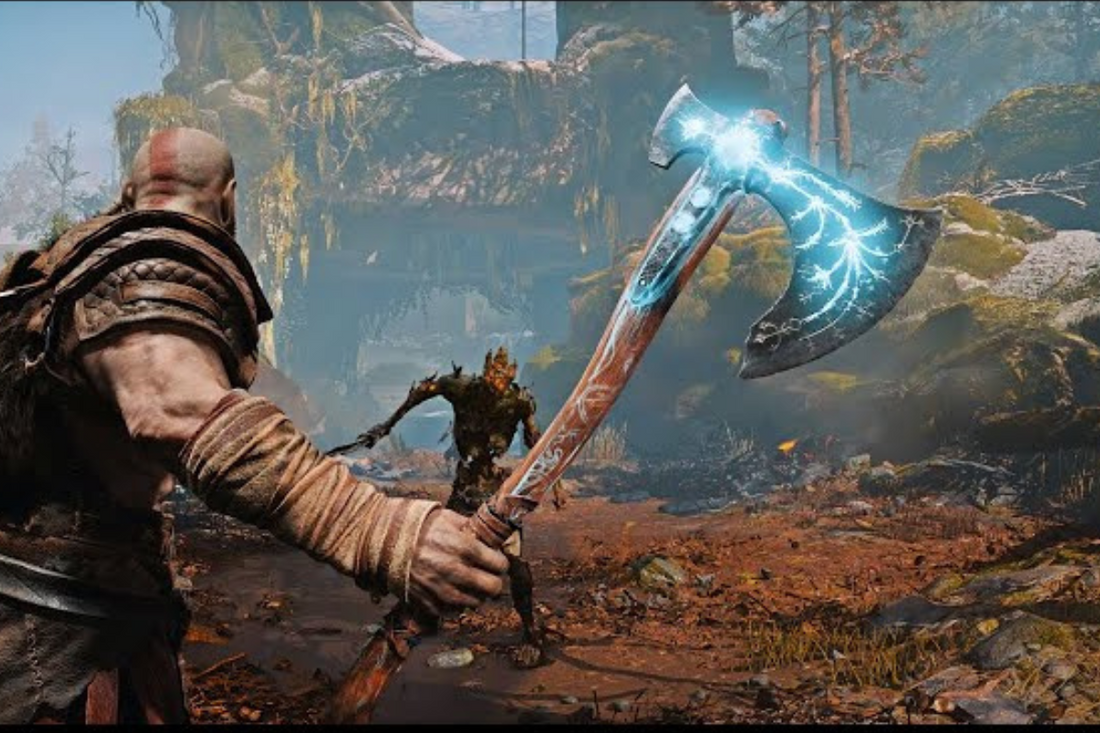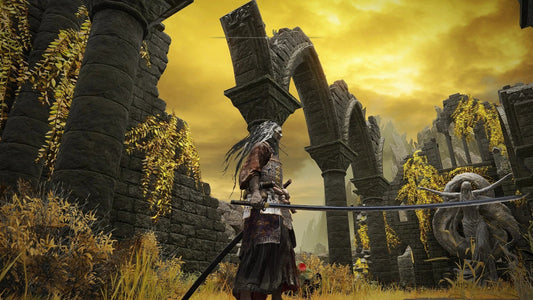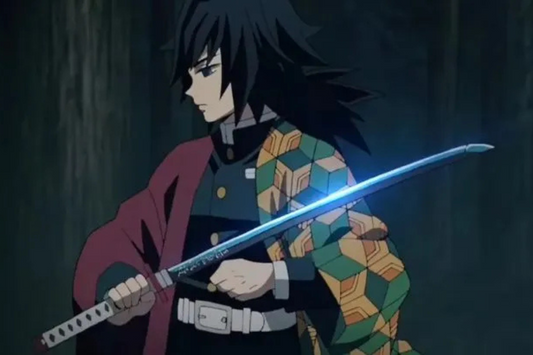
The Lore Behind the God of War Axe: The Leviathan’s Frozen Legacy
In the brutal and myth-infused world of God of War, few weapons carry as much mythological weight, narrative depth, and raw power as the Leviathan Axe—more commonly known among fans as the God of War Axe. Forged in ice and sealed with ancient runes, the axe became the new symbol of Kratos' rebirth when he left behind his past in Greek mythology and entered the realm of Norse gods. More than just a tool for battle, the God of War Axe represents legacy, redemption, and the frozen rage that Kratos now keeps under control. In this deep dive, we’re unraveling the icy lore of this legendary weapon—from its origins to its symbolism and the deadly power it holds in the hands of the Ghost of Sparta.
Forged by Dwarves, Bound by Destiny
The God of War Axe, formally named the Leviathan Axe, wasn’t forged by just any smith—it was the creation of Brok and Sindri, the Huldra brothers. These two dwarven blacksmiths are also known for having created Mjölnir, Thor’s hammer. But where Mjölnir embodied chaos and destruction, the Leviathan Axe was its opposite: a weapon forged to be a counterbalance to the uncontrollable storm. It was crafted with intention, embodying a quiet, overwhelming power, bound in frost and designed to cut down monsters and gods alike.
The brothers originally created the Leviathan Axe for Laufey, Kratos’ wife and Atreus' mother, who was a powerful giantess. It was meant to be wielded by someone who would fight for peace, not domination. After her death, Kratos inherited the weapon, and in his hands, the God of War Axe began to shape a new myth—one of restraint and ferocious love for his son.
Powers That Go Beyond Steel
The Leviathan Axe is more than just a bladed weapon. Imbued with runic magic and bound with ancient frost spells, it possesses a wide range of mystical abilities that make it uniquely deadly. Its signature trait is the ability to return to Kratos' hand when summoned, not unlike Thor’s Mjölnir. But unlike the thunderous brutality of the hammer, the God of War Axe has a graceful lethality, slicing through enemies with a whisper of ice and a scream of retribution.
Kratos can also charge the axe with frost energy, freezing enemies and obstacles, allowing for tactical versatility in combat. When paired with runic attacks and elemental upgrades, the axe can obliterate waves of Draugr, crush Revenants, and even stagger trolls. And let’s not forget that when thrown, it behaves more like a divine boomerang than a traditional axe, ricocheting off surfaces and cleaving enemies before returning to Kratos' palm with a thunderous snap.
Symbol of a New Kratos
In God of War (2018), the Leviathan Axe symbolizes more than combat—it represents the transformation of Kratos himself. After years of bloodshed and vengeance fueled by the Blades of Chaos, the axe marks a new chapter: one of fatherhood, regret, and cautious redemption. Unlike the fiery blades chained to his wrists, the God of War Axe is something he chooses to wield, not something that binds him.
Its chilled steel mirrors Kratos’ internal state. He is no longer the inferno of war, but a hardened man forged in loss and tempered by the cold reality of a second chance. Where once he tore through gods with volcanic fury, now he raises his axe not in wrath, but in protection—of Atreus, of his wife's memory, and of a future he barely dares to hope for.
Norse Mythology and the Axe’s Place Within It
The God of War Axe doesn’t just exist in isolation. Its very conception is deeply tied to the mythos of the Norse realms. As a counterpart to Mjölnir, the Leviathan Axe’s mere existence challenges the balance of power among the Aesir. This symbolic opposition becomes literal as Kratos eventually finds himself clashing with Thor, the very god who wields the weapon meant to embody unrelenting force.
Throughout the game, players learn that Laufey was a giantess who had foresight about the events to come. The axe wasn’t just a weapon—it was a piece of a prophecy. Kratos' wielding of the Leviathan Axe places him directly in the path of Ragnarok, the apocalyptic event foretold to bring ruin to gods and giants alike. In this sense, the axe is less a tool of war and more a key to fate itself, dragging Kratos and Atreus into a conflict they were destined to ignite.
A Weapon of Love and Legacy
The most poetic aspect of the God of War Axe is that it was not made for war—it was made as a gift, a bond between lovers, and later, a father’s tool to protect his son. Laufey’s spirit lingers in the axe, not just as its intended wielder but as the one who shaped Kratos’ journey without ever raising the weapon herself. This layered history elevates the Leviathan Axe from mythic weapon to narrative symbol.
When Kratos teaches Atreus how to fight, how to survive, and most importantly how to live without being consumed by rage, the axe becomes a bridge between generations. It’s the sword in the stone, the Excalibur of Midgard, passed down not through bloodlust, but through wisdom, discipline, and resilience.
Gameplay Mechanics that Mirror the Lore
The gameplay mechanics in God of War do a phenomenal job of reinforcing the lore and emotional weight of the Leviathan Axe. The very act of recalling the axe feels significant, not just functional. There’s a satisfaction in every swing, a weight in every impact, and a tactical elegance that separates it from Kratos’ previous weapons.
Players can upgrade the axe using resources found throughout the Nine Realms, tying progression to exploration. The runic slots allow for customization of magical abilities, while the axe’s two-handed grip adds a brutal, deliberate rhythm to combat. Every animation, from Kratos burying the axe in an enemy’s skull to summoning it mid-combo, reinforces its identity as the God of War Axe—an instrument of icy retribution shaped by grief and rebirth.
The Legacy of the God of War Axe
As the narrative unfolds across God of War (2018) and Ragnarök, the Leviathan Axe proves to be more than just a phase of Kratos' weapon cycle—it’s a legacy weapon. It grows with him, reflecting his journey from the vengeful god of Olympus to the reluctant father-god of Midgard. Its power is undeniable, but so is its restraint. It isn’t about dominance; it’s about balance.
Even as Kratos retrieves the Blades of Chaos once more in Ragnarök, the axe never loses its place. It represents everything he wants to be, while the blades represent everything he used to be. In the hands of Kratos, the God of War Axe is a promise: that violence will only ever be a last resort, that the sins of the past can be forged into tools of protection, and that even the God of War can choose peace—at least for a while.
Conclusion
The God of War Axe, the Leviathan, is not just a weapon. It’s a symbol of change, a monument to Kratos' evolution, and a critical piece of the Norse tapestry in which the newer entries in the God of War franchise are woven. Its mythic origin, magical abilities, and deeply emotional ties to both Kratos and Laufey make it one of the most iconic weapons in gaming history.
As Kratos continues to walk the line between godhood and fatherhood, warrior and protector, the axe remains by his side—always returning, always ready, and always reflecting the man he has become.




